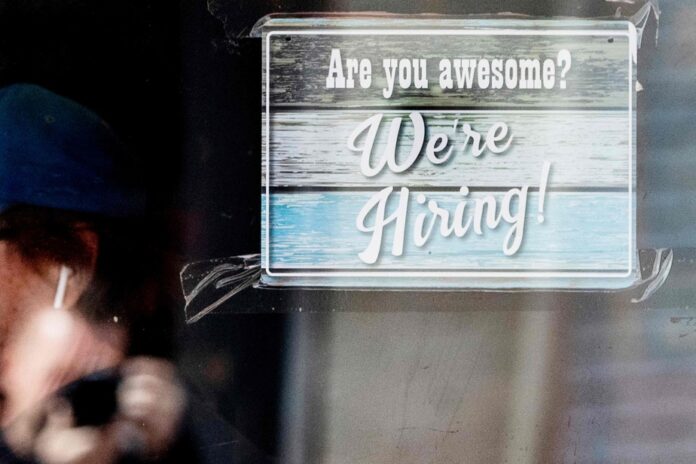(Washington) The job market was much more solid than expected in November in the United States, which nevertheless does not seem to thwart hopes of a lasting drop in inflation, four days before the Fed meeting.
In November, 199,000 jobs were created, up from 150,000 in October, according to figures released Friday by the Labor Department.
It is also more than the 175,000 job creations that were expected, according to the Briefing.com consensus.
This increase is notably due to the resumption of work among automobile manufacturers, after a historic six-week strike. In the United States, strikers are counted as job seekers.
The health sectors and the civil service have also recruited. Retail, on the other hand, has destroyed jobs.
“The labor market remains strong, with job growth still robust and unemployment at extraordinarily low levels,” Rubeela Farooqi, chief economist for High Frequency Economics, commented in a note.
The unemployment rate, in fact, is falling again, to 3.7%, after having climbed in October to 3.9%.
President Joe Biden highlighted the fact that since his arrival at the White House in January 2021, “more than 14 million additional Americans have experienced the dignity and peace of mind that a paycheck provides.” .
He added that “worker wages and household wealth are higher today than they were before the pandemic, after adjusting for inflation.”
“Most economists anticipate continued strength in the labor market,” Treasury Secretary Janet Yellen told reporters this week on the sidelines of a trip to Mexico.
“The economists who said that it would take a very high unemployment rate to succeed (in bringing down inflation, editor’s note) are eating their hat,” she added.
Because a slowdown in employment is expected in order to hope to see inflation fall sustainably, while the labor shortage experienced by the American labor market for more than two years has caused wages to soar, contributing to fuel the sharp rise in prices.
In November, wages “accelerated” over a month, “but remained stable over a year,” adds Rubeela Farooqi.
Nevertheless, “the picture that is emerging is that of a resilient, but more temperate, labor market,” underlines Lydia Boussour, economist for EY.
This is also the direction desired by the American central bank (Fed), which has been gradually raising its interest rates since March 2022, to slow down economic activity.
Its next meeting will take place Tuesday and Wednesday. A maintenance of rates at their current level, for the third time in a row, is mostly expected.
Because the risk of tightening too much is to plunge the country into recession.
Ms. Farooqi does not anticipate any further rate hikes in the coming months, and believes “the Fed’s next move will be a rate cut, probably by the middle of next year.”
Fed Chairman Jerome Powell recently warned that it is too early to anticipate a cut, and that additional hike remains on the table if necessary.
“While lower inflation figures in recent months are welcome, this progress must continue if we are to achieve our 2% target,” he commented.
“The employment situation still looks great and inflation is falling very quickly. And that’s exactly what we promised and what we want to happen,” said Chicago Fed President Austan Goolsbee.















